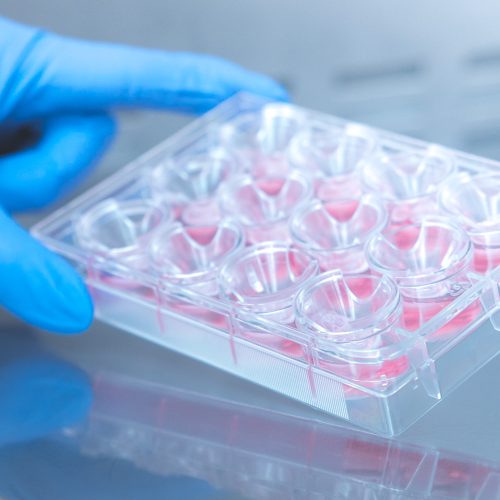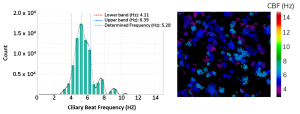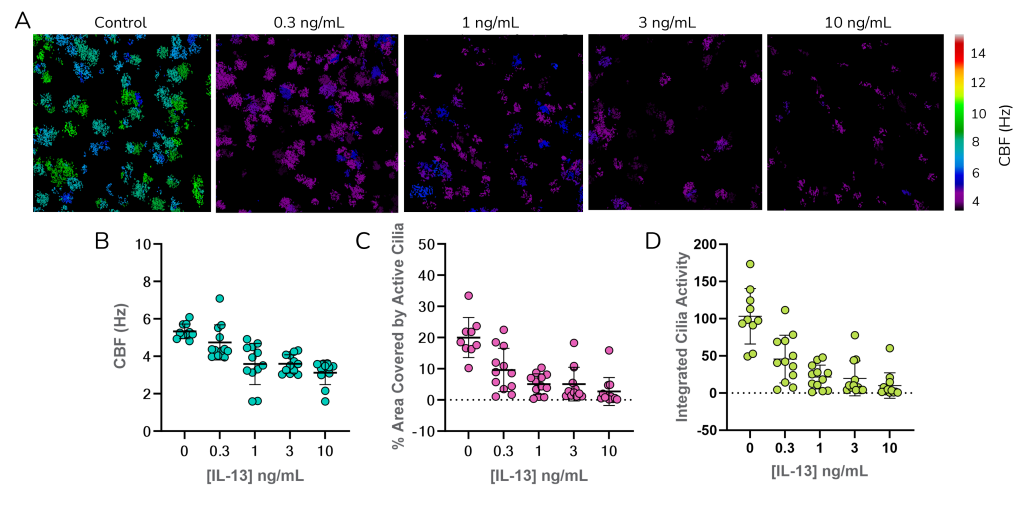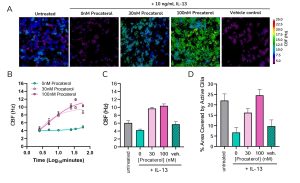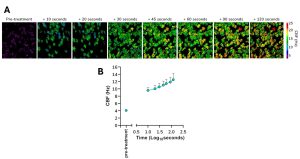In Vitro Ciliary Beat Analysis for Lung Small Airway Epithelial Cells
The lung ciliary beat frequency analysis in vitro assay helps assess the effect of drugs and chemicals on the function of cilia in the small airway epithelium. It predicts mucociliary clearance, evaluates drug efficacy and safety, dosing and compound kinetics.
The assay uses the physiologically relevant lung SAEC model in Air-liquid interface (ALI) culture to reliably predict in vivo results. It has been functionally validated and streamlined to accurately provide sensitive analysis of multiple functional parameters of beating cilia in healthy and disease-like conditions, offering added value to the SAEC toxicity assay.
High-definition videos of beating ciliated cells are captured using an optimized setup designed for increased sensitivity. This setup employs Newcells’ proprietary CiliaBeat software, which quickly generates accurate datasets. These datasets provide detailed, unbiased insights into the effects of drugs on the activity of SAEC and the frequency of beating cilia, enabling confident decision-making.
Assay outputs
- Ciliary beat frequency
- Percentage area covered by active cilia
- Ciliary beat frequency histogram
- Beating cilia heatmap
